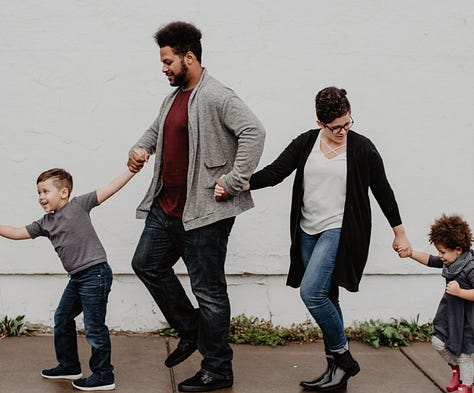Conversation frameworks for parents + families (2 of 2)
5 more tools that can help you at home and in life
-Today’s free tool: T2.8 THREATS + REWARDS CHECK-IN
-Amazon review, pls - Hey, amigos, If you’ve already bought the book, would you be up for posting a kind review on Amazon, please? It’s all algorithms these days. Thanks in advance.
In case you missed it, here’s the first Conversation frameworks for parents + families (1 of 2) post that I sent out Wednesday morning. Here are five more tool applications for you and your family.






T2.1 LEVEL SETTING CHECK-IN (p. 126)
Think of this as more of a technique than a tool. Before starting conversations about problems, projects, plans, making choices, etc. it’s always great to level set. Work through this -
What are we confident we know?
What do we think we know, but we’re not sure?
What do we think we don’t know?
What are we confident we don’t know?
Use this technique, or some modification of it, for family conversations. Teach your kids this technique. This helps you take a step back and set the table for constructive conversations. Level setting is great for avoiding misunderstandings and prioritizing conversations and actions.
T2.8 THREATS + REWARDS CHECK-IN (p. 140)
I came across this SCARF Model a couple of years ago. I’m so glad I did. I’d encourage you to read the “ABOUT THIS TOOL” description below. Use this to do periodic check-ins for yourself, your relationships, with your kids, etc. I find this particularly relevant give the challenges of the times we’re living in. Work to continually increase rewards and reduce threats. Get below the surface, and try to understand perceptions.
T5.1 EMPATHY MAP (p. 192)
What’s someone saying, seeing, hearing, and feeling/thinking? What are their goals and what’s getting in the way? An empathy map, or simply asking these questions, helps us to “walk in someone else’s shoes.” Teach your children to ask these questions. On the most basic level, getting into an empathy map mindset helps us to avoid objectifying people and/or defining people by their deficits. On an aspirational level, it helps us to figure out where we might be able to contribute.
T4.6 PROBLEM PRIORITIZATION ANALYSIS (p. 184)
It’s overwhelming when we’re confronted with a bunch of problems at once. It’s tough to decide where to start. This is a great conversation tool that helps you decide by considering SEVERITY and FREQUENCY. Using this conversation framework helps you to avoid focusing on “shark attacks” (high severity but low frequency) and nuisances (high frequency but low severity).
T7.5 NOVEL FEATURES + BENEFITS BLUEPRINT (p. 246)
Looking to make a big purchase? Comparing schools or neighborhoods? Comparing activities with your kids? Soccer or piano? Putting your place up on Airbnb? Have a conversation about, note down, and rank features and benefits. This tool forces you to think, keep things simple, and helps you make decisions based on benefits.
I hope you found this helpful. Please do reach out to me at gregvankirk@gmail.com or on LinkedIn if I can be of help. And if you haven’t purchased IT’S WHAT YOU SET IN MOTION: A TOOLBOX FOR COLLABORATIVE CHANGEMAKING, go to collaborativechangemaking.com.




